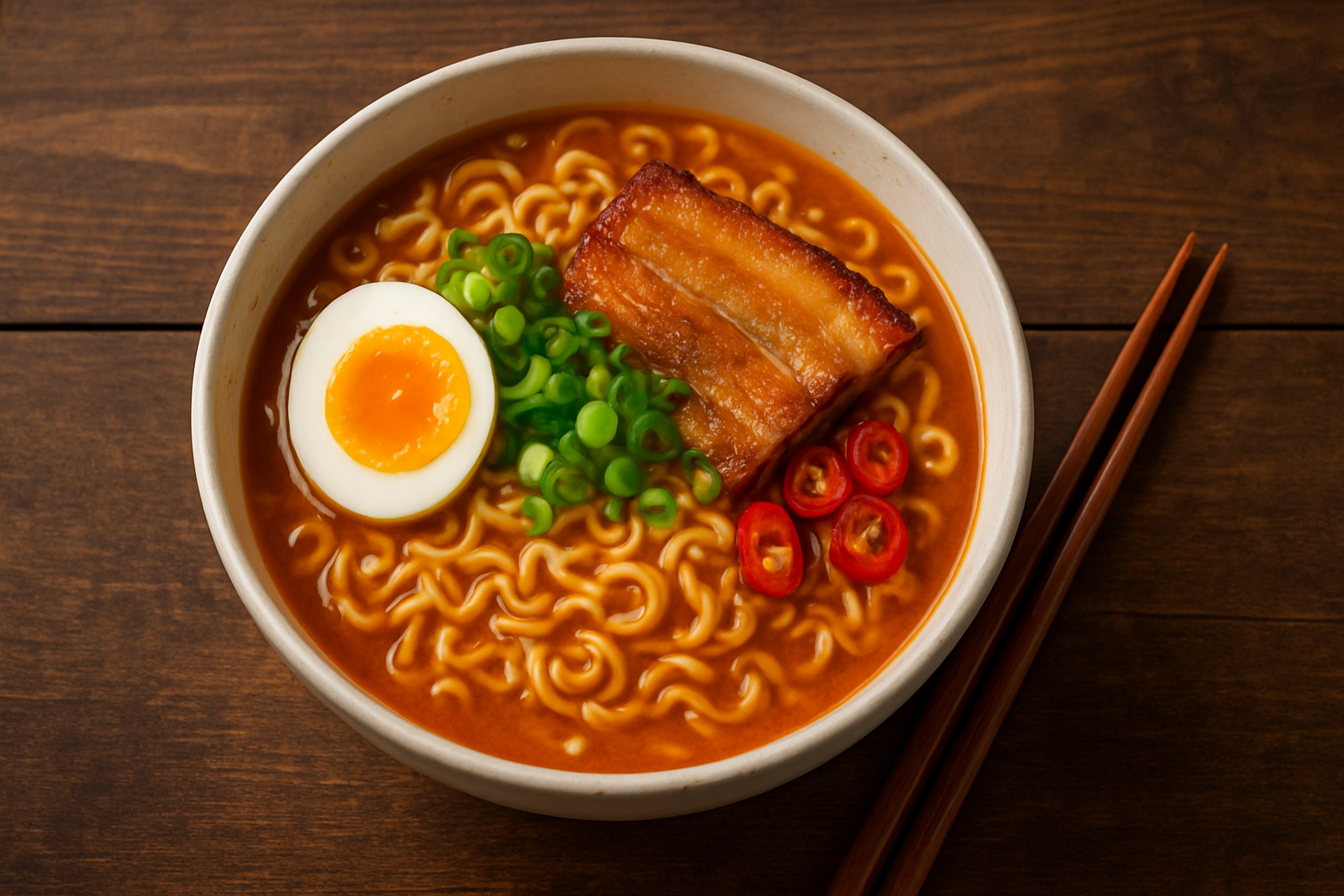1. The Relationship Between ‘Gelatinization’ and Digestion Speed
The speed at which a carbohydrate raises blood sugar is closely related to its degree of ‘gelatinization.’ ‘Gelatinization’ is the process where starch, when heated with water, swells, softens, and becomes easy to digest. The more gelatinized a food is, the faster it is digested and absorbed, and the more sharply it raises blood sugar. (e.g., the degree of gelatinization increases from raw rice -> cooked rice -> porridge).
2. Raw Ramen vs. Boiled Ramen
– Boiled Ramen: Boiling the noodles in hot water is a process that ‘maximally gelatinizes’ the starch. These soft, well-cooked noodles are digested and absorbed very quickly by our body.
– Raw Ramen: Although the noodles in a package of instant ramen are already cooked once by frying, they are in a dry state with no moisture. The starch in this state is less gelatinized, making it harder for our body’s digestive enzymes to break down. The process of crushing and chewing the hard noodles also requires more time for digestion.
3. Conclusion
Therefore, for the same amount of ramen, eating it raw and crushed results in a slower digestion and absorption speed, and thus a more gradual rise in blood sugar, compared to eating it boiled.
However, this does not mean that raw ramen is a good snack for diabetes. The fundamental nature of raw ramen as a ‘fried refined carbohydrate’ does not change, and sprinkling the accompanying soup packet on it means consuming a massive amount of sodium. From all aspects of health and blood sugar, it is best to avoid ramen.
Summary: Eating instant ramen raw, without boiling, tends to raise blood sugar more slowly than eating it boiled, because the starch is less gelatinized, slowing down digestion and absorption.


Leave a Reply